Track Categories
The track category is the heading under which your abstract will be reviewed and later published in the conference printed matters if accepted. During the submission process, you will be asked to select one track category for your abstract.

Nano Photonics is seen as a crucial technology which is expected to play a complementary role to micro/Nano electronics on chip and extend the capacity of telecommunication networks. Latest research is going on Nano photonics are Stability Formulation for Integrated Opto-mechanic Phase Shifters. Broadband achromatic metalens. From Two-Photon to Three-Photon Absorption. Detection of chemical and biological warfare agents. Fundamental and applied research into flexible electronics. Experimentation in electron beam lithography.
- Track 1-1 Optoelectronics and Microelectronics
- Track 1-2 Spectroscopy and Microscopy
- Track 1-3 Metamaterials
- Track 1-4 Photonic & plasmonic nanomaterials
- Track 1-5 Optical properties of nanostructures
- Track 1-6 Optics and transport on 2D materials
- Track 1-7 Nano-Opto mechanics
- Track 1-8 Quantum Nano-optics
- Track 1-9 Nano scale photo thermal effects
- Track 1-10 Quantum electronics

- Track 2-1 Ceramic engineering
- Track 2-2 Bio ceramic Materials
- Track 2-3 Ceramic & Metal Material
- Track 2-4 Ceramics Manufacturers and Market Analysis
- Track 2-5 Applications in Medical Technology
- Track 2-6Synthesis & Characterization of Nano structured ceramics
- Track 2-7 Future Advances in Ceramics

- Track 3-1 Nano Medical Devices
- Track 3-2 Nano Wires
- Track 3-3 Magnetic Nano Particles
- Track 3-4 Nano surface engineering
- Track 3-5 System integration, NEMS
- Track 3-6 Modelling and simulation of Nano materials & Nano devices
- Track 3-7 Nano scale process engineering
- Track 3-8 Nano device fabrication
- Track 3-9 Nano manufacturing techniques
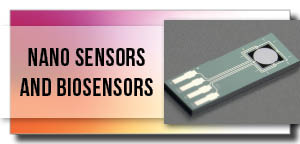
Biosensors converts the biological response into an electrical signals thereby the measurement is possible. The bio receptor may be a living organism or biological molecules, especially enzymes or antibodies. Measurement of target analyze without using any reagent is an added advantage of biosensor. New Sensor with a Breathalyzer. Optomechanical Nano sensor .hypoallergenic Electronic Sensor .optical Nano sensor Enhances Accuracy of Brain Mapping
- Track 4-1 Optical Nano sensors
- Track 4-2 Biosensor and Bio printing
- Track 4-3 Bio markers
- Track 4-4 Nano biosensors
- Track 4-5 Magnetic Sensors
- Track 4-6 Muscular Biopolymers
- Track 4-7 Latest Research & Applications of Nano sensing
- Track 4-8 Nano sensors Applications in Agriculture & Food Industry
- Track 4-9 Nano sensors for Chemical and Biological Applications
- Track 4-10 Nano sensors in Aquaculture

Nano Robotics is a field under continuous development. It involves the construction of robots of the size of 10^-9m. In the last decade many Nano robots have made their way out of the drawing boards to enter into the human body and do things beyond. These robots play a key role in the field of biomedicine particularly used for the removal of kidney stone, treatment of cancer & elimination of defected part in the DNA structure etc. Special networks of stationery Nano robots will be positioned throughout the body which will keep the track of each active Nano robot passes & then report the results. Nanorobotics is also being developed for therapeutic manipulations.
- Track 5-1 Swarm Robotics
- Track 5-2 Biochip
- Track 5-3 NU bots
- Track 5-4 Robotic vision, localization and navigation
- Track 5-5 Robotic Cholecystectomy
- Track 5-6 Robotic Laparoscopy
- Track 5-7Nano robots in Cancer Detection and Treatment
- Track 5-8 Nanorobotics in Gene Therapy
- Track 5-9 Market Approaches

Nano biotechnology is the application of nanotechnology in biotechnology. Applications in molecular diagnostics and pharmaceuticals, which include drug discovery, drug development, and drug delivery, are described. Nano biotechnology has refined the current molecular diagnostics by extending the limits of detection to single molecules. Nanoparticles play an important role in the delivery of biological therapies, which include cell therapy, gene therapy, vaccines, RNA interference, and antisense therapeutics. The most promising application of Nano biotechnology relevant to healthcare is for the development of personalized medicine. The refinement of molecular diagnostics, combination of diagnostics with therapeutics, and targeted drug delivery play important roles in this application. Finally, the safety issues of nanoparticles are discussed including measures to address these. The future prospects of Nano biotechnology are excellent the purpose of this sub track is to show, by selected examples, how biological approaches can contribute to Nano science.
- Track 6-1 Bio nanotechnology
- Track 6-2 Diagnostic applications
- Track 6-3 Therapeutic applications
- Track 6-4 Cellular Engineering
- Track 6-5Sparse cell detection
- Track 6-6 Tissue assisted cell engineering
- Track 6-7 Lipid Nano technology
- Track 6-8 Nano viridae
- Track 6-9 Applications of Nano biotechnology in Plant Virus Diseases
- Track 6-10 Nanotechnology and Its Applications in Animal Biotechnology

- Track 7-1 Nano Pharmaceutical for drug delivery and therapy
- Track 7-2 Treatment of neurodegenerative disorders
- Track 7-3 Nano Pharmaceutical in biological therapy
- Track 7-4 Nanotechnology tools for drug development
- Track 7-5 Nanotechnology tools for personalized medicine
- Track 7-6 Solid lipid nanoparticles
- Track 7-7 Nanoparticles of biodegradable polymers
- Track 7-8 Nanozymes
- Track 7-9 Cancer Treatment
- Track 7-10 Nano emulsions
- Track 7-11 Nano Chemistry
- Track 7-12 Nano Toxicity in phamaceutical
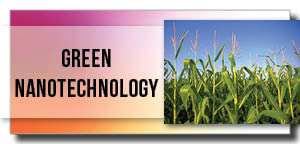
- Track 8-1 Water filtration by Nano technology
- Track 8-2 Grapheme Nano technology in Solar cells
- Track 8-3 Greener Techniques to make Nanomaterials
- Track 8-4 Toxicology and analysis
- Track 8-5 Social and economic aspects
- Track 8-6 Environment Applications
- Track 8-7 Green Nanotechnology Challenges And Opportunities
- Track 8-8 Barriers to Green Chemistry Innovation
- Track 8-9 Polymer Science

- Track 9-1 Biomaterials for Tissue Engineering
- Track 9-2 Thermodynamics of materials
- Track 9-3 Materials for bone repair and regeneration
- Track 9-4 Biomaterial Scaffolds
- Track 9-5 Biomaterials for drug delivery systems
- Track 9-6 Nanomaterials for Future Applications in Analytical Chemistry
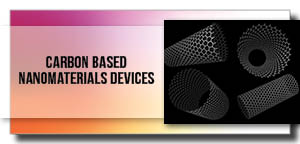
- Track 10-1 Characteristics of carbon-based nanomaterials
- Track 10-2 Carbon Nanomaterials for Electronics and Optoelectronics
- Track 10-3 Carbon nanotubes for electronic and optoelectronic applications
- Track 10-4 Graphene for electronics and optoelectronics
- Track 10-5 Carbon Nanomaterials for Photovoltaic Applications
- Track 10-6 Carbon Nanomaterials for Sensing Applications
- Track 10-7 Carbon nanotubes in Biomedical Engineering
- Track 10-8 Environmental Applications of Carbon-Based Nanomaterials
- Track 10-9 Recent Developments

- Track 11-1 Improved Diagnosis, Prevention and Treatment for Disease
- Track 11-2 Toxicity Issues
- Track 11-3 Nanoparticles: Health Effects
- Track 11-4 Current Status of Nanomedicine Research
- Track 11-5 The future of Nanomedicine
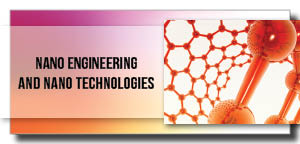
Smart materials are defined as materials with properties engineered to change in a controlled manner under the influence of external stimuli. Some of the external stimuli are temperature, force, moisture, electric charge, magnetic fields and ph. The self-assembly of peptides has enormous applications in the fields of medicine and electronics. Bio-inspired engineered systems have been designed based on the mechanistic perceptions obtained from natural systems for novel self-assembled structures. In the biological system, each cell type is programmed to display different levels of smartness.
- Track 12-1 Wet nanotechnology
- Track 12-2 Green nanotechnology
- Track 12-3 Nano architectonics
- Track 12-4 Nano biotechnology
- Track 12-5Nanotechnology in Oil Industry
- Track 12-6 Environmental impact of nanotechnology
- Track 12-7 Regulation of nanotechnology
- Track 12-8 Foundations in Nano Engineering
- Track 12-9 Characterization of Nano Engineering Systems
- Track 12-10 Computational Modeling of Nano systems
- Track 12-11Health impact of nanotechnology
- Track 12-12Applications of nanotechnology & Nano engineering
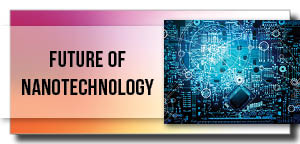
- Track 13-1 Tackling climate change
- Track 13-2 Cancer Research
- Track 13-3 Genetic Therapy and Medicine
- Track 13-4 Nanoparticle-Filled Ink Conducts Electricity
- Track 13-5 Gene Therapy and Drug Delivery
- Track 13-6 Protective Coating for your Skin
- Track 13-7 Nanomaterials In The Food Supply
- Track 13-8 Nanotechnology in the Oil Industry
- Track 13-9 Challenges and risks of nanotechnology